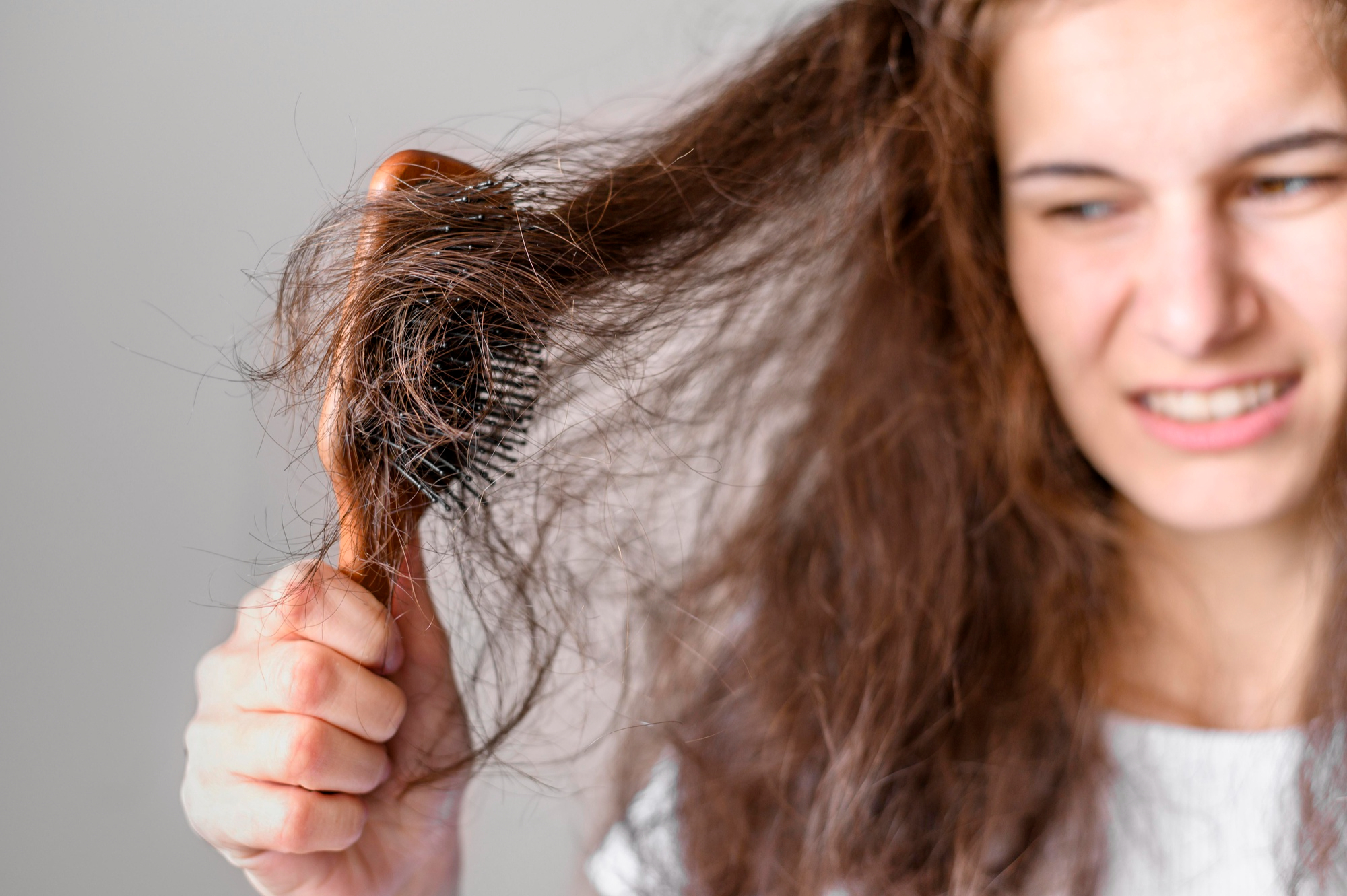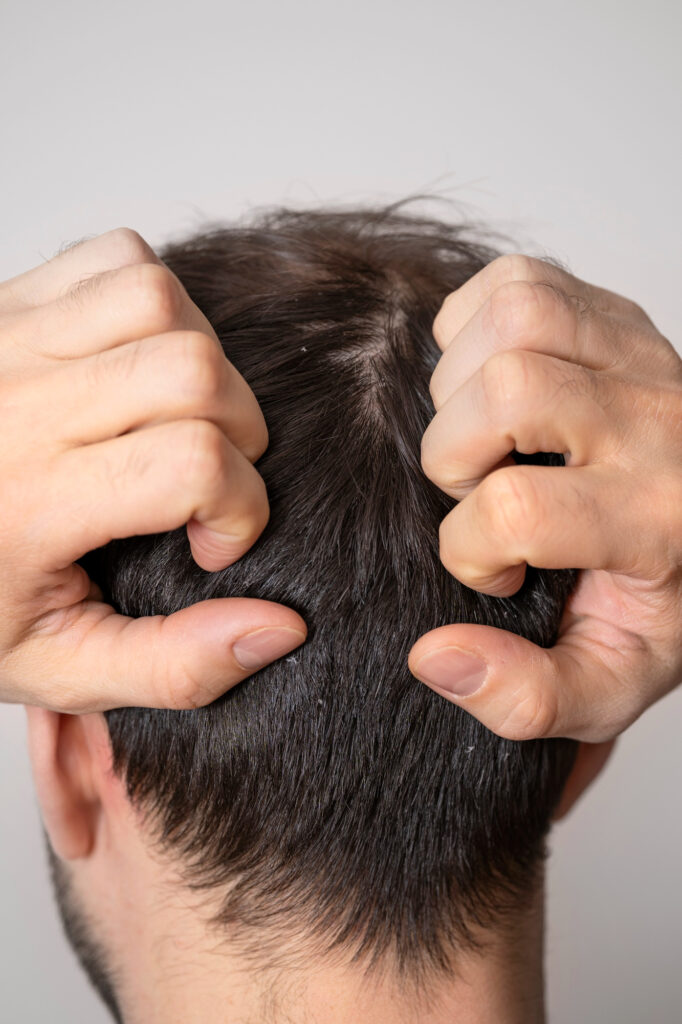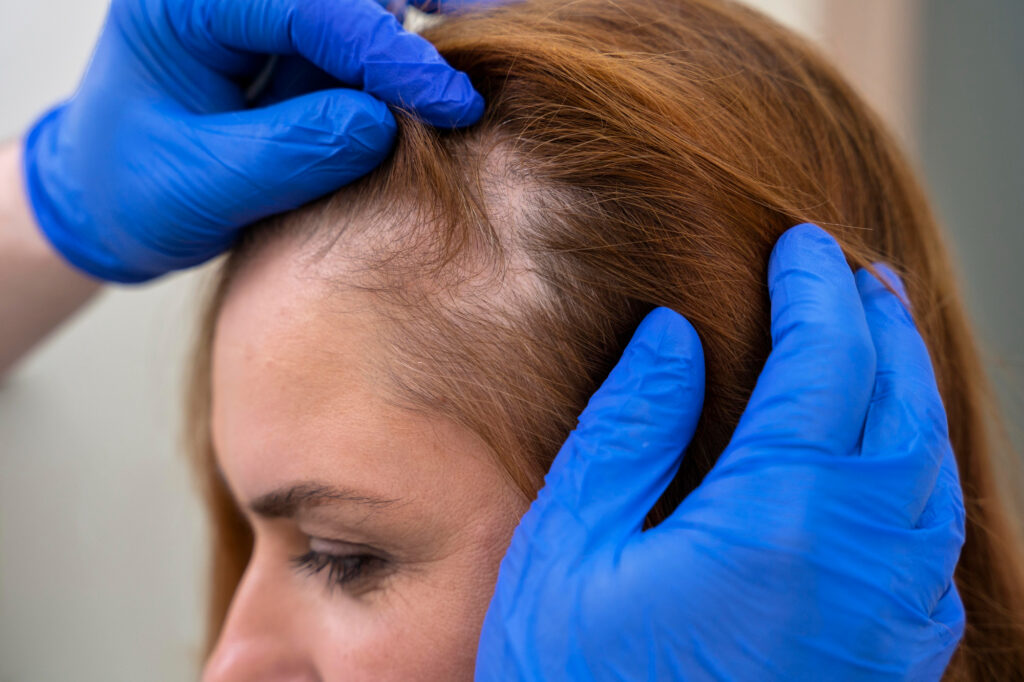General Hair Loss Information

Did you know that everyone loses hair every day. Losing up to 100 hairs a day is normal!
But if hair loss runs in your family, you could lose a lot more hair. With this kind of hair loss, you may end up with bald spots if you are a man. If you are a woman, you may find that the hair on the top of your head is slowly thinning. About half of all people have this type of hair loss by around age 50.
Although hair loss is fairly common, it can be a tough thing to live with, especially when it changes how you look. But there are ways you can treat your hair loss.
What causes hair loss?
Common causes of hair loss include:
- Family history – Hair loss is usually inherited, which means it’s passed down from one or both of your parents.
- Stress, including physical stress from surgery, illness, or high fever.
- Chemotherapy, which is powerful medicine that destroys cancer cells.
- Damage to your hair from pulling it back too tightly, wearing tight braids or ponytails, or using curling irons or dyes.
- Age. You grow less hair as you get older. Hair also gets thinner and tends to break more easily as you age.
- Poor diet, especially not getting enough protein or iron.
- Thyroid diseases, such as hypothyroidism and hyperthyroidism .
What are the symptoms?
Your doctor will ask you some questions, like how much hair you’re losing, when it started, and whether your parents have hair loss. He or she will look closely at your scalp and hair loss pattern and may gently pull out a few hairs for tests.
If it’s not clear what’s causing you to lose your hair, your doctor may do a blood test or look at a sample of your hair or scalp with a microscope
How is hair loss diagnosed?
How you choose to treat your hair loss depends on the cause. It also depends on your feelings. You may decide that you need treatment, or you may not be worried about thinning hair or baldness. The choice is up to you.
If hair loss is caused by something that won’t last or can be treated, your hair is likely to grow back.
For example, if an under-active thyroid is causing the problem, taking thyroid medicine may help. And most hair lost during chemotherapy will grow back after the treatment ends.
Hair loss that runs in the family can be treated with medicines or hair transplant surgery.
Some people choose to wear hairpieces, like wigs or toupees. Finding different ways of styling your hair, like dyeing or combing, also can help.
If hair loss is caused by something you can control, like stress or medicines, you can treat it by getting rid of the cause.


How is hair loss treated?
How you choose to treat your hair loss depends on the cause. It also depends on your feelings. You may decide that you need treatment, or you may not be worried about thinning hair or baldness. The choice is up to you.
If hair loss is caused by something that won’t last or can be treated, your hair is likely to grow back. For example, if an underactive thyroid is causing the problem, taking thyroid medicine may help. And most hair lost during chemotherapy will grow back after the treatment ends.
Hair loss that runs in the family can be treated with medicines or hair transplant surgery. Some people choose to wear hairpieces, like wigs or toupees (say “too-PAYZ”). Finding different ways of styling your hair, like dyeing or combing, also can help.
If hair loss is caused by something you can control, like stress or medicines, you can treat it by getting rid of the cause.

